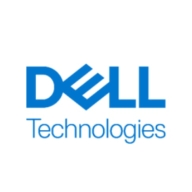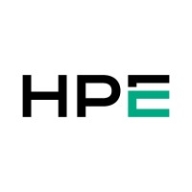

Dell PowerEdge C-Series and HPE BladeSystem compete in the server solutions market, particularly suited for virtualization and high-performance computing. Dell PowerEdge C-Series may hold an advantage due to its more affordable pricing and superior ease of management, while HPE BladeSystem is recognized for its greater scalability.
Features: Dell PowerEdge C-Series is known for its effective management tools including iDRAC, hot-swappable nodes, and reliable support, tailored for high CPU performance and virtualization. HPE BladeSystem is celebrated for robust performance, scalability, and modular design, featuring high-density blade configurations and centralized management via HPE OneView.
Room for Improvement: Dell PowerEdge C-Series grapples with mixing drive types, high pricing, and requires improvements in AI integration for monitoring. HPE BladeSystem faces challenges with older hardware compatibility and complex firmware upgrades, requiring a more intuitive GUI and improved energy efficiency.
Ease of Deployment and Customer Service: Dell PowerEdge C-Series is commonly deployed on-premises and offers responsive, high-quality technical support. HPE BladeSystem also focuses on on-premises deployment with increased hybrid option capacity, though support quality has noted a decline with outsourcing.
Pricing and ROI: Dell PowerEdge C-Series is perceived as expensive, but justified by its comprehensive features and performance, yielding favorable ROI through time savings. HPE BladeSystem is considered a high-value investment, despite its cost, offering an extensive feature set and modularity. Dell’s competitive pricing appeals to budget-conscious buyers, while HPE attracts those prioritizing high-end features and robust support.
I would rate technical support from HPE as an eight on a scale from one to ten.
I encounter challenges in identifying reasonable prices during the setup cost and licensing process, especially for scalability when we need to contact different vendors for quotes to find competitive offers.
I do not have to call HP support frequently, which indicates its reliability.
This is one area where they can improve the performance of the server or implement some application improvements in the solution to make it easier for end users to implement properly.
To do any customization, we need to contact HP technical support, and the process is not user-friendly.
In general, there is a 10% to 15% price gap compared to competitors.
With around 19 years of exposure in working with various servers, including HPE, I encounter challenges in identifying reasonable prices during the setup cost and licensing process, especially for scalability when we need to contact different vendors for quotes to find competitive offers.
In general, there is a 10% to 15% price gap compared to competitors.
The integration of storage and networking components within the HPE BladeSystem is quite beneficial as it is easily interoperable if we are using the same system for monitoring with the same software, which eliminates interoperability issues.
The feature I find most valuable is the ease of use.
| Product | Market Share (%) |
|---|---|
| HPE BladeSystem | 12.9% |
| Dell PowerEdge C- Series | 1.9% |
| Other | 85.2% |


| Company Size | Count |
|---|---|
| Small Business | 15 |
| Midsize Enterprise | 4 |
| Large Enterprise | 10 |
| Company Size | Count |
|---|---|
| Small Business | 29 |
| Midsize Enterprise | 40 |
| Large Enterprise | 103 |
Dell PowerEdge C-Series is known for its high performance, scalability, and efficient power usage, making it suitable for demanding applications in data centers. Its compact design and affordability offer practicality and value for businesses seeking reliable hardware solutions.
PowerEdge C-Series offers robust virtualization capabilities and advanced reliability with Intel Xeon sockets and Intel's RAS. This series is valued for seamless expansion and strong technical support, enhancing its appeal for enterprise environments. While there is room for improvement in cost, compatibility, and additional memory slots, it remains a favored choice for database servers, VOIP systems, and application hosting due to its flexible configurations and ease of integration with VMware infrastructure. Enhancements desired by users include better AI integration, more iDRAC functionality, and improved stability and service procedures.
What are the key features of PowerEdge C-Series?In banking, telecommunications, and public sectors, Dell PowerEdge C-Series is implemented to support virtual machines, internal applications, and high-performance computing tasks. Its reliable integration with VMware infrastructure makes it an ideal choice for businesses seeking efficient workload management and critical hardware backup solutions. Its affordability and power efficiency allow organizations in these sectors to meet their computing demands without straining budgets.
HP ProLiant BladeSystem share power, cooling, network, and storage infrastructure via the blade enclosure. Since equipment is not needed for each server, you get a dramatic reduction in power distribution units, power cables, LAN and SAN switches, connectors, adapters, and cables. And you can add the newest-generation technologies by simply changing individual components.
We monitor all Blade Servers reviews to prevent fraudulent reviews and keep review quality high. We do not post reviews by company employees or direct competitors. We validate each review for authenticity via cross-reference with LinkedIn, and personal follow-up with the reviewer when necessary.